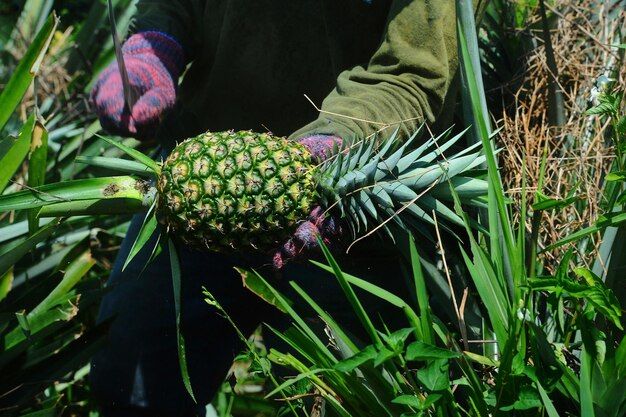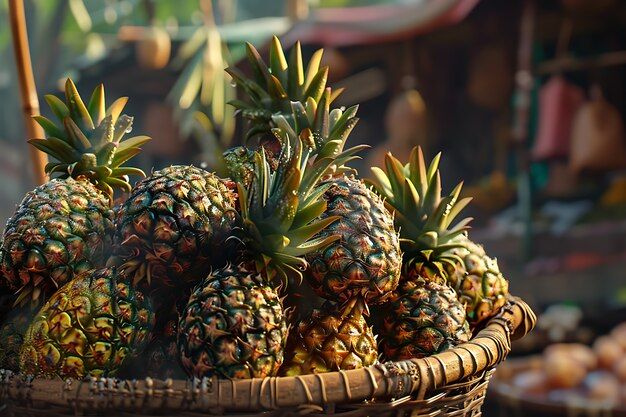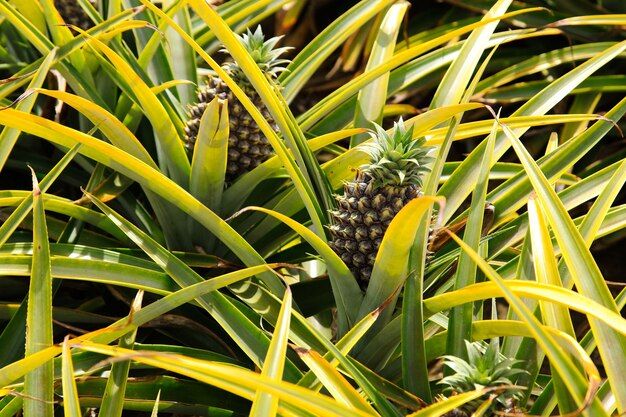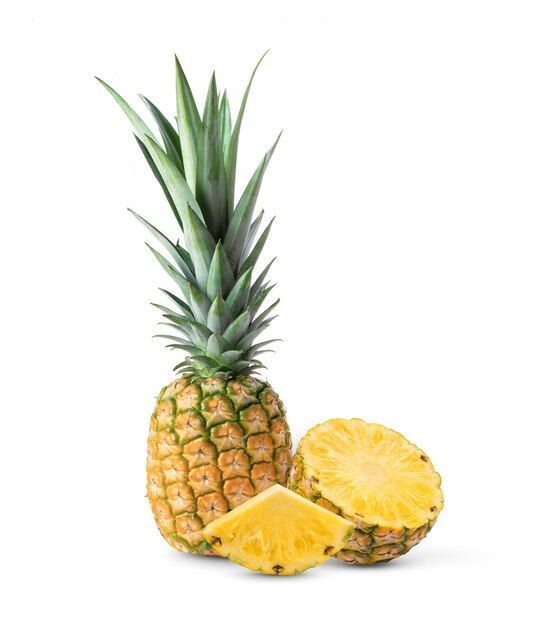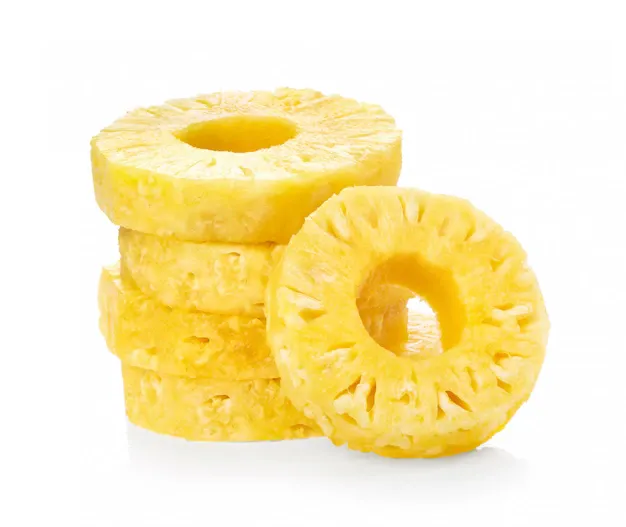Pineapple, scientifically known as Ananas comosus, is one of the most popular tropical fruits in the world. Not only does it boast a deliciously sweet and tangy flavor, but it also has numerous health benefits. The fruit is rich in essential vitamins and minerals, making it an excellent addition to a balanced diet. But behind the scenes of its growth lies an intriguing process, with various cultivation methods that have evolved to maximize the fruit's yield and quality.
In this blog post, we will explore the various methods of pineapple cultivation, from traditional practices to modern agricultural techniques, as well as the remarkable health benefits that come from eating pineapple.
1. Introduction to Pineapple Cultivation
Pineapple is believed to have originated in South America, specifically in regions of modern-day Brazil and Paraguay. However, it is now grown in tropical and subtropical climates all around the world. Pineapple cultivation has been a significant agricultural activity for centuries, and with advancements in farming techniques, pineapple production has increased dramatically. Today, countries like Costa Rica, the Philippines, Thailand, and India are among the top producers of this prized fruit.
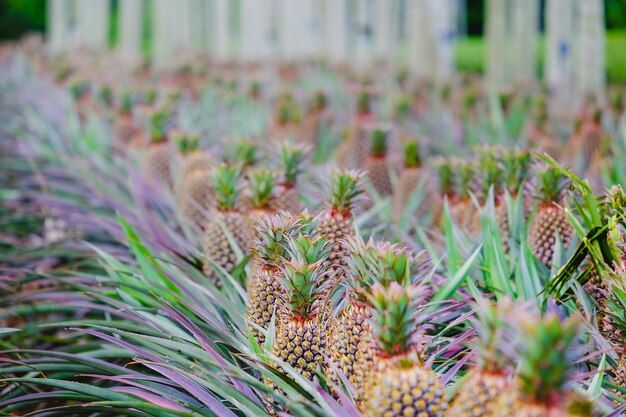
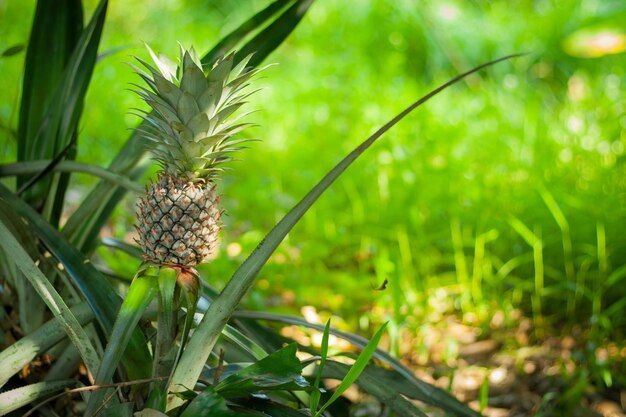
Pineapple plants thrive in well-drained, fertile soils with plenty of sunlight. The fruit is typically grown from suckers or crowns (the leafy top part of a mature pineapple), and it takes between 18 to 24 months for the plant to mature and produce its first fruit. However, cultivation methods have evolved to improve yield, reduce disease, and adapt to different environments.
2. Traditional Pineapple Cultivation Methods
Historically, pineapple cultivation was a manual process that involved planting suckers or slips into soil, maintaining a regular irrigation schedule, and ensuring proper care during the plant's growth cycle. Farmers often had to manually remove weeds and pests, and hand-pollination was required for fruit production.
While these methods still exist in some parts of the world, they have largely been replaced or supplemented by more modern farming techniques. However, traditional cultivation practices still play a role in small-scale pineapple farming, particularly in regions where mechanization is not feasible.
2.1 Sucker and Slip Propagation
In traditional pineapple farming, the most common method of propagation is through suckers or slips. A sucker is a small shoot that emerges from the base of the plant, while a slip is a shoot that grows from the fruit itself. Both suckers and slips can be used to propagate new plants, which is a process called vegetative reproduction.
Farmers typically select healthy suckers or slips from mature plants and replant them into the soil. This process ensures that the new plants maintain the same genetic characteristics as the parent plant, resulting in consistent fruit quality.
2.2 Manual Weed Control and Irrigation
Weed control and irrigation were traditionally managed by hand, with farmers pulling weeds manually and ensuring that the plants received sufficient water. Irrigation systems were often simple, using channels or ditches to divert water to the pineapple fields. In regions with rainfall, farmers would rely on natural precipitation for irrigation.
While these methods are still in use today, they are often supplemented with more efficient irrigation systems, such as drip irrigation, and modern herbicides for weed control.
3. Modern Pineapple Cultivation Methods
Advancements in technology and agriculture have led to the development of more efficient and scalable pineapple cultivation methods. These modern techniques are designed to increase yield, reduce labor costs, and enhance the quality of the fruit. Some of the most notable advancements in pineapple farming include:
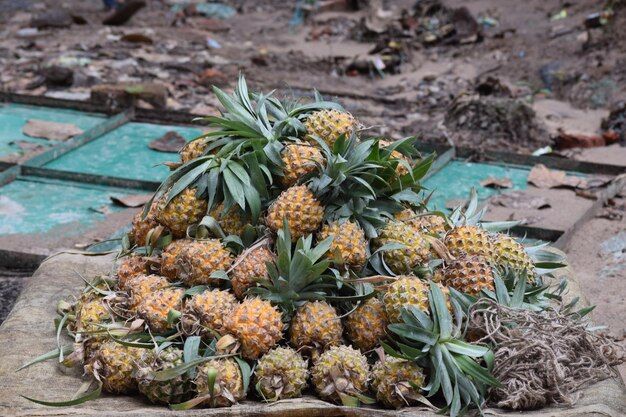

3.1 Tissue Culture Propagation
One of the most significant advancements in pineapple cultivation is tissue culture propagation. This technique involves growing new pineapple plants from small tissue samples taken from the parent plant. These samples are placed in a sterile laboratory environment, where they are treated with hormones that encourage rapid growth and development.
Tissue culture propagation allows farmers to produce a large number of uniform plants in a relatively short amount of time. The resulting plants are disease-free and genetically identical, which ensures consistency in fruit quality and yield.
3.2 Greenhouse Cultivation
Greenhouses offer a controlled environment for growing pineapples, where temperature, humidity, and light levels can be carefully regulated. This method helps protect the plants from extreme weather conditions, pests, and diseases, resulting in healthier plants and higher yields.
Greenhouse cultivation is particularly beneficial in regions where the climate is not ideal for pineapple production. By using greenhouses, farmers can create an optimal growing environment for pineapples, regardless of external weather conditions.
3.3 Fertilization and Soil Management
Modern pineapple farming places a strong emphasis on soil fertility and proper fertilization. Pineapples require a balanced supply of nutrients to grow properly, including nitrogen, phosphorus, and potassium. Farmers typically use a combination of organic and synthetic fertilizers to provide the plants with the nutrients they need.
Soil management techniques, such as crop rotation and the addition of organic matter, are also employed to maintain soil health and fertility over time. These practices help prevent soil degradation and ensure sustainable pineapple farming.
3.4 Integrated Pest Management (IPM)
Pests and diseases are common threats to pineapple crops, and integrated pest management (IPM) is a modern approach used to control these issues. IPM involves using a combination of biological, chemical, and cultural control methods to reduce the impact of pests and diseases on pineapple plants.
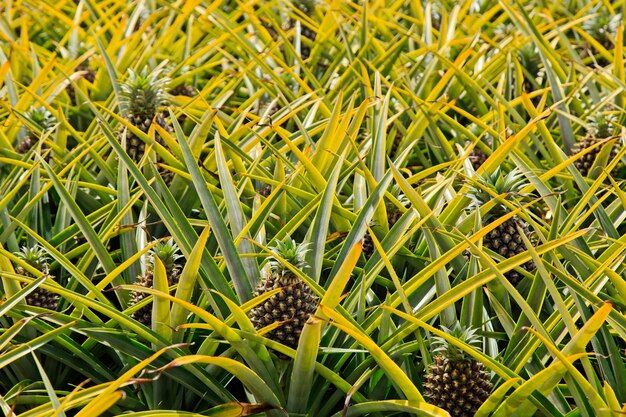
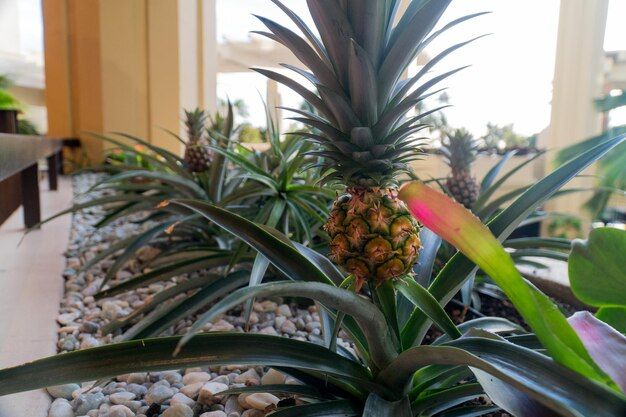
For example, farmers may introduce natural predators, such as ladybugs, to control aphids or use eco-friendly pesticides to protect the plants from harmful insects. Crop rotation and proper sanitation are also key components of an effective IPM strategy.
3.5 Harvesting and Post-Harvest Handling
The timing of pineapple harvest is critical to the quality of the fruit. Pineapples are typically harvested when they reach full maturity but before they become overripe. Harvesting is often done by hand, with workers using machetes or knives to cut the fruit from the plant.
After harvest, pineapples must be carefully handled to prevent damage. They are typically cleaned, sorted, and packed for transportation. In modern operations, advanced packing lines and refrigerated storage systems are used to maintain fruit quality during transit and storage.
4. The Health Benefits of Eating Pineapple
Pineapple is not just a tasty tropical fruit; it also offers a wide range of health benefits. Rich in essential vitamins, minerals, and antioxidants, pineapple can help improve digestion, boost immunity, and promote overall health. Let's take a closer look at some of the key benefits of eating pineapple.
4.1 Rich in Vitamin C
One of the most notable nutrients in pineapple is vitamin C, an essential antioxidant that plays a vital role in protecting the body from oxidative stress. A single cup of pineapple contains more than 100% of the recommended daily intake of vitamin C, which is important for immune function, collagen production, and wound healing.
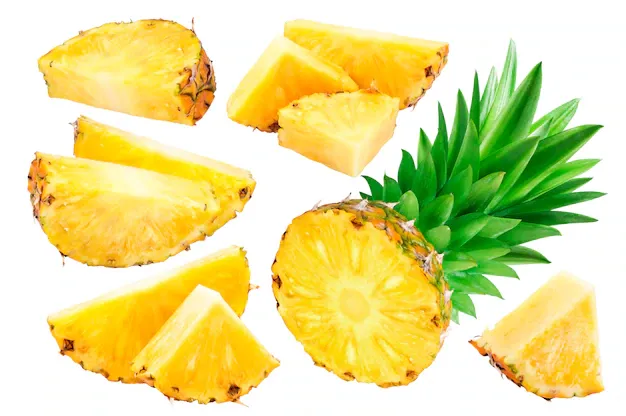
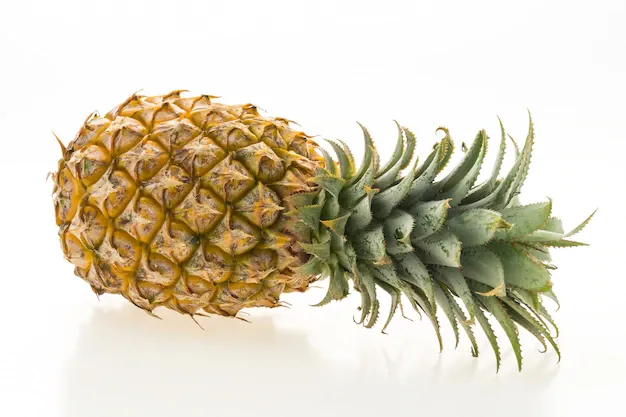
Vitamin C also helps protect the skin from damage caused by free radicals and promotes healthy aging by reducing the appearance of wrinkles and fine lines.
4.2 Supports Digestive Health
Pineapple contains an enzyme called bromelain, which has been shown to aid in the digestion of proteins. Bromelain works by breaking down protein molecules into smaller fragments, making it easier for the digestive system to absorb nutrients. As a result, pineapple can help improve digestion and reduce symptoms of indigestion or bloating.
In addition to bromelain, pineapple is also a good source of dietary fiber, which helps promote regular bowel movements and supports gut health.
4.3 Anti-Inflammatory Properties
Bromelain, the enzyme found in pineapple, also has anti-inflammatory properties. Studies have shown that bromelain can help reduce inflammation in the body, making pineapple an excellent food choice for individuals with inflammatory conditions such as arthritis or sinusitis.
Regular consumption of pineapple may help alleviate symptoms of these conditions and promote overall joint and respiratory health.
4.4 Boosts Immunity
The high vitamin C content in pineapple helps strengthen the immune system, making it easier for the body to fight off infections and illnesses. In addition to vitamin C, pineapple contains other beneficial compounds, such as manganese and beta-carotene, that further support immune health.
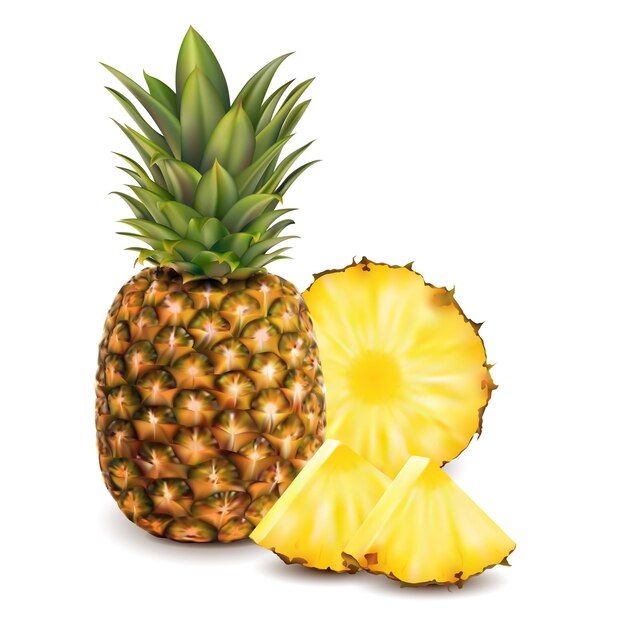
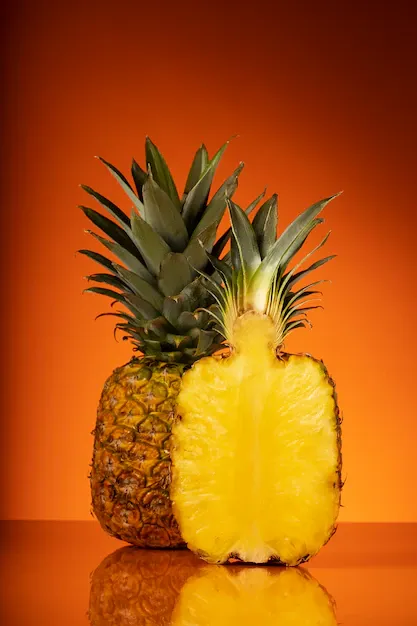
By including pineapple in your diet, you can help your body stay protected from common colds, flu, and other infections.
4.5 Promotes Skin Health
Pineapple's combination of vitamin C, antioxidants, and bromelain makes it a great choice for supporting healthy skin. Vitamin C is essential for collagen production, which helps maintain the skin's elasticity and firmness. The antioxidants in pineapple help protect the skin from environmental damage caused by UV rays and pollution.
Bromelain may also help reduce skin inflammation and promote faster healing of wounds, cuts, and bruises.
4.6 Supports Weight Loss
Pineapple is low in calories and high in fiber, making it an excellent choice for those looking to maintain or lose weight. The fiber content helps increase feelings of fullness, reducing the likelihood of overeating. Additionally, pineapple's natural sweetness can satisfy cravings for sugary snacks, making it a healthier alternative to processed sweets.
The combination of fiber, water, and low-calorie content makes pineapple a great addition to any weight loss plan.
4.7 May Improve Heart Health
The antioxidants and anti-inflammatory properties of pineapple can also benefit heart health. Pineapple's high vitamin C content helps reduce oxidative stress and inflammation, both of which are linked to heart disease. Additionally, bromelain has been shown to help reduce blood clotting, which may lower the risk of heart attacks and strokes.
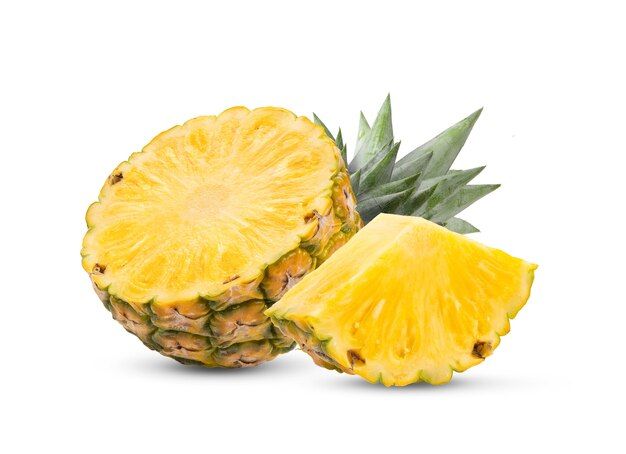
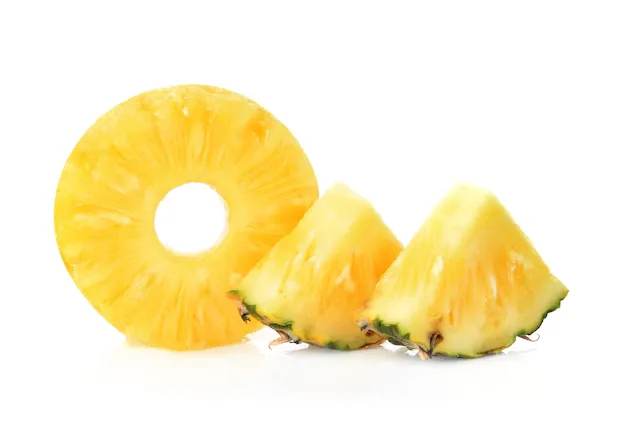
5. Conclusion
Pineapple cultivation has come a long way from traditional methods to modern farming techniques that maximize yield, improve fruit quality, and ensure sustainability. Whether grown through tissue culture propagation, greenhouse farming, or integrated pest management, pineapple production is a complex and highly specialized process.
video credit take farm HD
At the same time, eating pineapple offers a wide array of health benefits. From providing a rich source of vitamin C to supporting digestion, reducing inflammation, and promoting heart health, pineapple is not just a delicious fruit but also a powerful addition to a healthy diet.
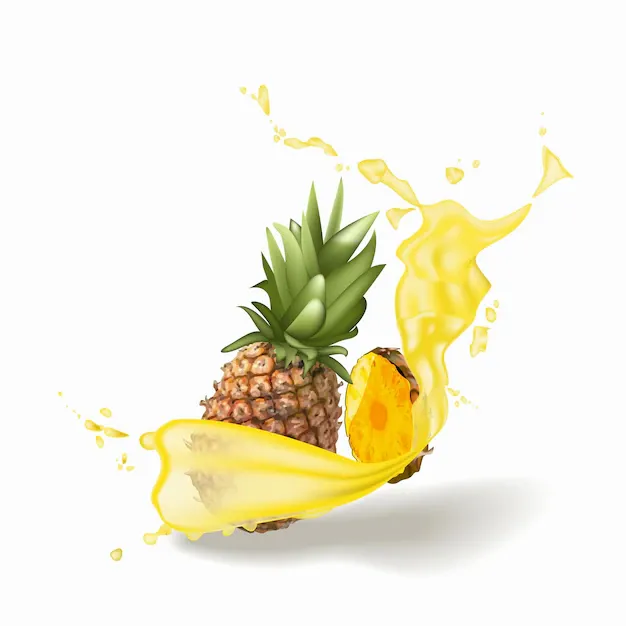
So, the next time you enjoy a juicy slice of pineapple, remember that it’s not just a treat for your taste buds—it’s a powerhouse of nutrients that can help boost your health in numerous ways!
